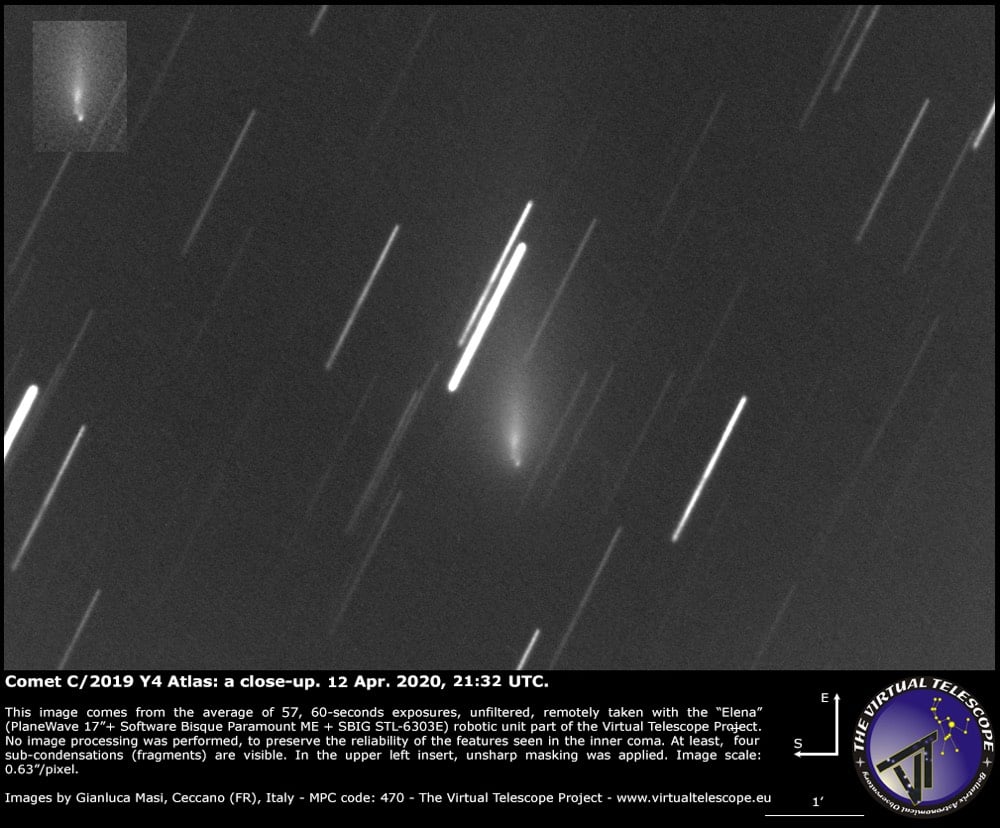Recently Discovered Comet Might Put On a Show
Back in late December, a new comet called Comet ATLAS (or C/2019 Y4) was discovered by a robotic astronomical survey on the lookout for objects that may strike the Earth. Don’t worry, Comet ATLAS isn’t going to hit us, but it has a chance to put on quite a show.1 It didn’t seem like much at first, but since its discovery Comet ATLAS has gotten brighter much faster than scientists have expected.
When astronomers first spotted Comet ATLAS in December, it was in Ursa Major and was an exceedingly faint object, close to 20th magnitude. That’s about 398,000 times dimmer than stars that are on the threshold of naked-eye visibility. At the time, it was 273 million miles (439 million kilometers) from the sun.
But comets typically brighten as they approach the sun, and at its closest, on May 31, Comet ATLAS will be just 23.5 million miles (37.8 million km) from the sun. Such a prodigious change in solar distance would typically cause a comet to increase in luminosity by almost 11 magnitudes, enough to make ATLAS easily visible in a small telescope or a pair of good binoculars, although quite frankly nothing really to write home about.
Except, since its discovery, the comet has been brightening at an almost unprecedented speed. As of March 17, ATLAS was already magnitude +8.5, over 600 times brighter than forecast. As a result, great expectations are buzzing for this icy lump of cosmic detritus, with hopes it could become a stupendously bright object by the end of May.
But the brightening could also be a sign that the comet is ejecting a lot of material because it’s burning itself out, so grain of salt. But if keeps brightening at a good pace, it could be visible during the day in the northern hemisphere.
If Atlas manages to remain intact, some in the field have suggested it could grow from magnitude +1 to possibly -5. At the brightest extreme, it could be visible even during the day.
The location of the comet is also notable-unlike more recent comets, it will be best viewed in the Northern Hemisphere.
Chuck Ayoub recently captured the comet arcing across the night sky with his backyard astrophotography rig:
Oh I hope Comet ATLAS can keep it together. I vividly remember going outside in rural Wisconsin darkness to see the tail of Comet Hyakutake stretch halfway across the sky. One of the most amazing things I’ve ever seen.
Update: It looks as though Comet ATLAS will not be dazzling naked-eye observers later this spring — the comet seems to have broken into 3 or 4 pieces as it nears the Sun.

Although I guess Comet ATLAS is good news if you’re looking for signs of the apocalypse too. Pandemic: check. Bright new light in the sky: check.↩





Stay Connected